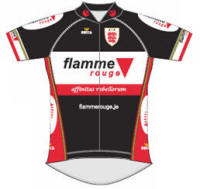Recovery Nutrition ~ Goodness Shakes
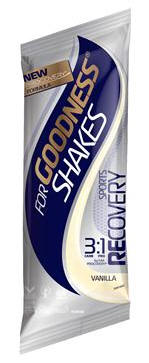
Okay, it's time to 'fess up here. I don't normally do recovery drinks.
As "up-to-date" as I am with all the latest scientific training thingy's, power meters and statistical analysis, I'm old school when it comes to recovery nutrition.
I fuel up before a ride, I fuel up during a ride and as soon as the cool down's complete, within five minutes of getting through the door, I have a chicken or tuna sandwich with a cup of tea.
It's then run the shower, download the SRM and Strava info, kit off (apologies to our sensitive readers), shower, pat dry, and off to analyse the day's data.
An hour later, to pre-load for tomorrow's ride, it's a hearty, carb fuelled lunch, followed by the cyclists ubiquitous power nap!
However, all that may be about to change. . .
Tomorrows Ride Starts Today
We've spoken about this before in other factsheets, so I'll quickly gloss over
it here.
If you're riding at a training camp, a stage race, a multi-day sportive, an endurance charity event, or as I type, coming to the end of a five day super-compensation training block, you need to make sure you can sustain the effort for the full duration that your event or training schedule demands.
In a couple of days time, there's no point riding for four hours, if you should be training for four hours. Four hours averaging 200 watts, when it should be 220, isn't making you stronger. It's making you more tired, not a good long-term prospective.
Riding requires nothing more than mental fortitude and inner hardness. Training, and the ability to over-reach the bodies current fitness levels, requires fuel for the engine in a body that's as recovered as it can be from its previous exertions.
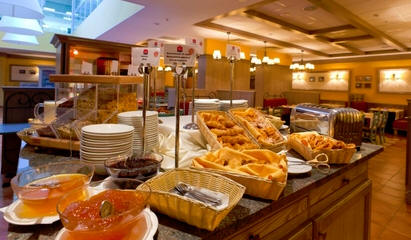
On day one, say you had a hearty evening meal the night before, and have fuelled up with 100 gms of carbs for breakfast. You're all ready to go. You're fresh, you're fit, you nail the session or event, and you come back pleasantly fatigued.
The process of becoming a stronger, fitter, faster rider on your journey towards local cycling notoriety, has begun.
If only it was that simple.
Fast forward to day four, of your training camp, stage race, the Haute Route, Raid Alpine or whatever other similar endurance-fest you're undertaking. Without a tried and tested recovery strategy, you're now tired, possibly exhausted. You're getting slower each day and your legs hurt. This messes with your head.
A great ride starts in the head, not the legs.
You eat 100 gms of carbs and you end up, due to muscle fatigue and motivational issues, riding to survive rather than compete. Your endurance ride is now something you are having to endure rather than enjoy. You might even actually start to put on weight as you eat more and more to fuel your perceived lack of energy.
Each day you become more fatigued and each day you have to battle with the brain that's telling you this is madness.
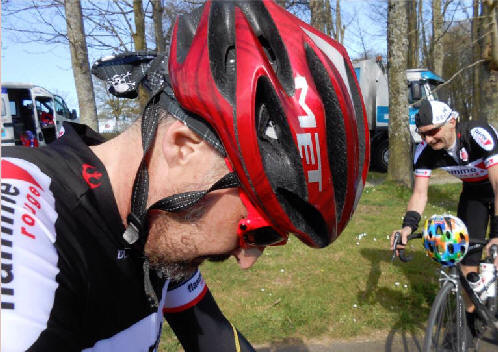
It doesn't have to be this way.
Rewind ~ Exercise 101
I'm sure by now you are all familiar with how your body goes
through the "breakdown-repair-stronger" cycle of getting fitter. You can recap on the detail, if you have the time, right here.
. .
▼ Intensity v Volume
▼ Fitness v Rest
▼ Overtraining
For every action, punishing your body, there is a
reaction; damage, fatigue, repair. The outcome being an increase
in fitness. To demonstrate this, below is a section of my
Performance Management Chart from WKO+, from Christmas Day to today
June 6th, D-Day. The day after a five day endurance block.
The Blue Line, traces my chronic fitness level across the timeframe. The Pink Line tracks the acute training stress (a combination of weekly intensity and volume) and the Yellow Line is the level of residual fatigue, tiredness and damage to the body.
Your job as a cyclist, and my job as a coach, is to maximise the return on your training investment. What's the maximum SUSTAINABLE benefit for the minimum of quality input? In the succinct words of our American cousins, "getting the most bang for your buck".
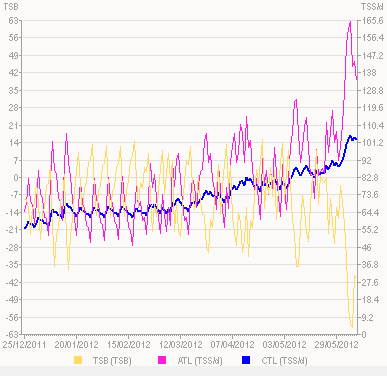
Early January (far left), sees the infamous flamme rouge Climbageddon Sessions with four pink peaks on the trot. High intensity, high volume, high damage. The yellow line drops, showing pain, and the blue line climbs slowly, indicating fitness arriving.
February comes and we level out volume and go for intensity and speed work with the Classics Circuits. The pink lines stabilise to a mid point and the yellow fatigue lines come up to meet them. This is our consolidation phase after four months of intense preparation.
The blue line reflects this with our first "designed" plateau of the season.
March arrives and the trek from base camp begins, onwards and upwards. With races coming thick and fast and training blocks fitting in around them to prepare for the Couliannaise at Le Mans.
At 07/04, you can see a big block of training in preparation for the Tro Bro Leon and Cipollini events, then a further consolidation (back off intensity for volume) before the first of two, five day training blocks.
The quality (and benefit) of the second block is determined by the quality of the recovery from the first.
The higher the pink line, the harder you've trained in the last seven days. The higher the blue line, the fitter, faster, stronger you're getting. The lower the yellow line, the more damage you've done to yourself, the more important a recovery strategy is for your continued progression.
Which brings us to our subject in hand.
Recover to Success
Line one of my Slackers Charter, clearly states, ~ "Either you factor in
planned recovery for yourself, or your body will do it for you, unplanned, not
in a nice way and at the most inconvenient time possible".
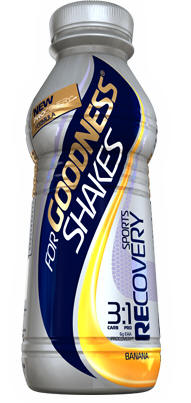 Recovery is good.
Recovery is a vital part of your
training. If you don't believe me go and train for 30 straight days and
let me know how you get on. Please don't do it, it's a
rhetorical remark!
Recovery is good.
Recovery is a vital part of your
training. If you don't believe me go and train for 30 straight days and
let me know how you get on. Please don't do it, it's a
rhetorical remark!
If recovery is vital to your success, shouldn't you be putting as much thought and effort in to recovery as you do in to your training and interval sessions?
Shouldn't you be looking to make that recovery process quicker and more efficient? Time is a very precious commodity. Time is money, time is important.
The better, faster and more efficient your recovery, the sooner you can go again and get back on it.
The higher the quality of your recovery, the higher the level of subsequent work you can perform, than would of previously been the case. Further advancing your fitness, your strength, your speed, your power.
Exercise, at the levels we undertake, induces substantial muscle trauma; micro-tears in the muscle fibres, inflammation, the dreaded DOMS (Delayed Onset of Muscle Soreness) lactate build up and, if you've done it properly, makes you just plain tired.
It also, as we've discussed previously, has the capacity to create an imuno-suppression effect on the body. To be honest, it's not good for you doing all this damage to your body! Unless you manage it correctly.
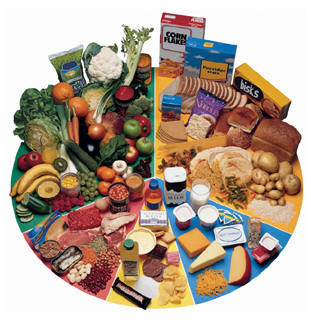
Recovery Window
We've covered this loads of times before, but again, I'll just do a quick recap.
The body provides us all, with a golden twenty minute nutrition window of opportunity.
This is the period where we can maximise our bodies intakes of nutrients and minerals.
During this time, your body takes on sponge like absorption qualities. Don't let this opportunity pass you by, ever.
That's why it's, have a proper cool down on the last ten minutes of your ride. And make sure you consume your carb drink on the way home while you're cruising.
Never get home with anything left in your bottles. Then as soon as you hit the door, get some quality nutrition in to yourself.
Before now, it was my sandwich of choice. Having tried the Goodness Shakes recovery drinks, I'm now going to rethink how I do things. And here's why.
Sandwiches (chicken or tuna) are brilliant as you get a quick, tasty, textured, combination of carbs and protein in to you. Which is relief in itself after eating and drinking sugars in drinks, bars, gels and fruit all ride.
Unfortunately, I can't eat a sandwich without mayonnaise or butter. No low-fat spreads in this house!
But the problem with a sandwich is you don't really know what's in it at a macro or micro-nutrient level. I know it's better than nothing, but I'm not sure what it's doing, it just tastes nice and I like it.
 Better Than Food?
Better Than Food?
Goodness Shakes, at a macro level, contain a 3:1 mix of carbs to protein.
They have around 55 gms of carbohydrates (depending on flavour) and 16gms of protein, which is made up of a mixture of whey and casein.
This is important because of the disparate, yet complementary, properties of these two elements.
Whey, is a "fast" protein, it gets in to your system quickly to maximise the speed of muscle repair. Casein, is the "slow" protein, which is absorbed over a greater time period to minimise catabolism and protein breakdown. Between them they also provide the nine essential amino acids that your body can not produce itself. Not sure how many of these are in a tuna butty!
The 3:1 mix of carbs to protein is also important as trials have suggested an improvement to exhaustion when this mix is used. I've also covered this under a previous Chocolate Milk study. This product is the next level up.
Hydration, or to be exact, re-hydration is as important as food when trying to recover. We train, we sweat, we lose fluids and we lose minerals.
Now I do love my post-ride cuppa but to be honest, there may be anti-oxidants in a cup of Tetley's but I doubt there's the electrolytes, sodium, potassium and calcium I need to get me up and at 'em the next day. Even with the compulsory chocolate digestive.
This product has a vitamin list as long as your arm and is made from biologically, food-sourced ingredients. So it shouldn't cause any gastric distress or adverse reactions. It's suitable for vegetarians, but not vegans and comes in the usual four flavours of Banana, Vanilla, Chocolate and Berry.
Finally. . . It's quick, you throw a sachet's contents in to a bottle and add water. It's convenient, it's pre-measured and you make it there and then, even at the end of an event. It won't go off and become bacteria ridden sitting in a hot car for seven hours!.
It tastes like melted ice-cream, isn't too sweet or sickly and really hits the spot after a hard session.
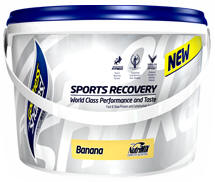 It comes in sachets or tubs, or premixed in 500 ml
cartons. If you're doing a big, multi-day event (especially the Haute
Routers), then these (or similar products) should be part of your post-ride,
training, competing, recovery regimen.
It comes in sachets or tubs, or premixed in 500 ml
cartons. If you're doing a big, multi-day event (especially the Haute
Routers), then these (or similar products) should be part of your post-ride,
training, competing, recovery regimen.
As I've said above, there are lots of recovery drinks and powders on the market and at some point or another I've bought them, been given them or been asked to try them. I've tried them all.
The fact that I'm thinking of replacing my real food with this product, when I've never been convinced before, is why I've produced this factsheet. I've seen recovery drinks with aspartame in them, I've tasted some horrible concoctions, and I've suffered "gastric distress" with others. With one product, I was scared to sneeze for two days!
In my opinion, these taste nice, work well, and are convenient. I'm also willing to put my hand in my pocket and buy them myself; which is why they're on this page here. The objective of this site is to give you the information to help you become a better rider. I believe these shakes, used in the right way at the right time, can do that.
 Why not give them a try in your training
period to see if they're for you.
Why not give them a try in your training
period to see if they're for you.
And as with all things, DO NOT use them for the first time during your event or critical period.
Test everything in a training session first.
The Message
Now you won't want to be using these for every ride. I still think there's a place
for "proper" food but if you're on one of our
Performance Programmes and are entering your amber
or red weeks, then these should be on your list. Especially if you're doing the
60 sec Killers or
Blitzers!
If you're riding Saturday and Sunday, then absolutely take one immediately post-ride Saturday. On Sunday, if you're taking Monday as a recovery day, stick with normal food, although with the taste of the vanilla one, it might be a bit hard to resist.
If you're doing a multi-day event, grab a handful of pre-measured sachet's and make consuming one of these the first thing you do when you stop your bike. Come day three you'll really feel the benefits kick in as the cumulative fatigue appears to be under control and you start riding away form the non-believers.
They may seem a tadge expensive, but when I look at the value of the bikes around me on a ride, what people spend on wheels, power meters and heart monitors, then around £1. 40 a shot on a recovery super food, that will help you go faster, sooner, for longer, has to be an out and out bargain.

